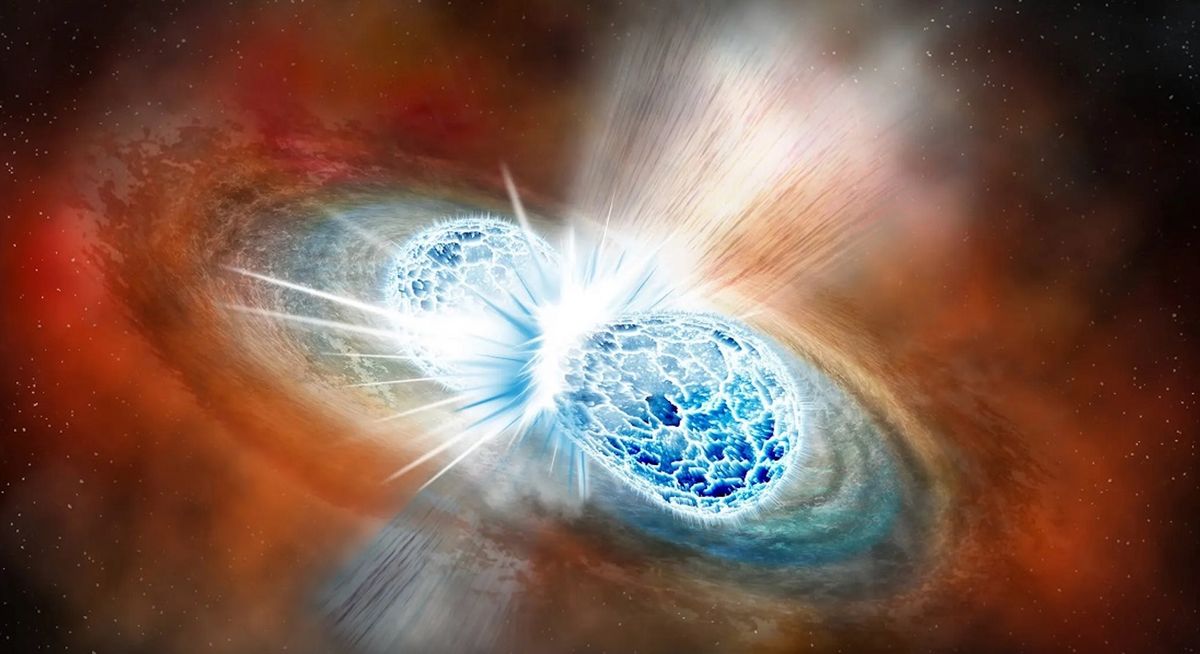James Webb Space Telescope finds neutron star mergers forge gold in the cosmos: 'It was thrilling'
By Robert Lea published 2 days ago
"This is the first time we've been able to verify that metals heavier than iron and silver were freshly made in front of us."

An illustration of two neutron stars colliding and merging to create a kilonova blast. (Image credit: Robin Dienel/Carnegie Institution for Science)
Scientists have analyzed an unusually long blast of high-energy radiation, known as a gamma-ray burst (GRB), and determined that it originated from the collision of two ultradense neutron stars. And, importantly, this result helped the team observe a flash of light emanating from the same event that confirms these mergers are the sites that create elements like gold.
The observations, made using the James Webb Space Telescope (JWST) and the Hubble Space Telescope, allowed scientists to see gold and heavy elements forged, which could help us better understand how these powerful neutron star merger events generate the only environments in the universe turbulent enough to create elements heavier than iron, such as silver and gold which results in a flash of light called a kilonova.
"It was thrilling to study a kilonova as we had never seen before using the powerful eyes of Hubble and JWST," research team member and University of Rome astrophysicist Eleonora Troja told Space.com. "This is the first time we've been able to verify that metals heavier than iron and silver were freshly made in front of us,"
GRBs, which are the most powerful explosions of energy in the known universe, have been associated with neutron star mergers before — but this discovery is different.
More:
https://www.space.com/james-webb-space-telescope-fresh-gold-cosmos-kilonova-grb
